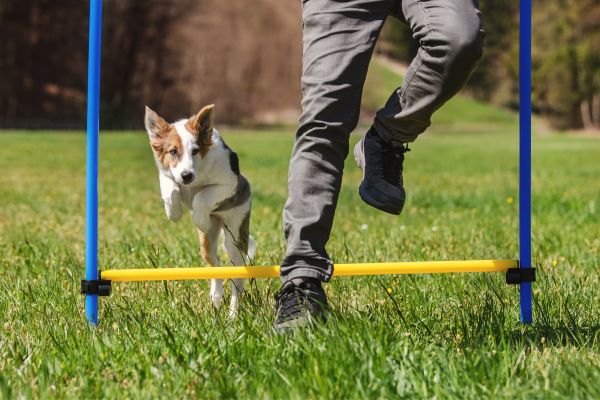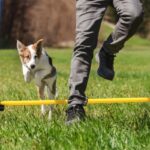If you’ve ever walked your dog and felt your heart race the moment another dog appeared, you’re not alone. Training a reactive dog can feel like trying to defuse a ticking time bomb on a leash. But here’s the thing — your dog isn’t “bad.” They’re just reacting to something that makes them feel uncomfortable or scared. And with the right approach, patience, and mindset, you can absolutely help your reactive dog become calmer and more confident.
Understanding What “Reactive” Really Means
Before we dive into how to handle it, let’s clear one thing up. A reactive dog isn’t necessarily aggressive. Reactivity is an emotional response — barking, lunging, growling, or even freezing when triggered by certain things. It could be other dogs, strangers, bikes, loud noises — you name it.
The key difference? Aggression comes from intent to harm. Reactivity comes from stress, fear, or overexcitement. Understanding this shift changes everything. It moves the conversation from punishment to empathy, from frustration to patience.
Why Dogs Become Reactive
Dogs don’t wake up one morning and decide to bark at everything that moves. Reactivity develops over time — sometimes from lack of socialization, a bad experience, or even genetics. Maybe your dog got attacked once, or maybe they were never exposed to different environments as a puppy.
Other times, it’s just personality. Some dogs are naturally more sensitive, alert, or protective. And let’s be real — if you think about it, we all have our triggers too. The difference is, your dog doesn’t know how to manage those emotions yet. That’s where training comes in.
The First Step: Managing Expectations
When it comes to training a reactive dog, patience is your best friend. There’s no magic overnight fix. You’ll be working through layers of emotion, building trust, and teaching your dog that the world isn’t such a scary place after all.
Your goal isn’t necessarily to make your dog love every other dog or person. The goal is to help them stay calm and respond to you instead of reacting to the environment. Progress might look small — like walking past a dog 20 feet away without a meltdown — but trust me, that’s huge. Celebrate it.
Creating a Safe Training Environment
One of the best ways to start is to remove as much pressure as possible. Reactive dogs don’t learn well when they’re stressed. Find quiet areas to walk or train where you can control the distance between your dog and their triggers.
Distance is your friend. Every dog has what’s called a “threshold” — the point where they start reacting. You want to stay below that line while helping them associate triggers with positive experiences. Think of it as slowly expanding your dog’s comfort zone, one calm moment at a time.
If you can, use long lines in open spaces where your dog can explore without feeling trapped. Feeling cornered or restricted often fuels reactivity, especially when they’re on a tight leash.
Building Trust Through Desensitization
Desensitization is the fancy word for gradually exposing your dog to what sets them off — but in a controlled, positive way. Let’s say your dog loses it when they see another dog. Start by watching dogs from a distance where your pup is still relaxed. The moment they notice the dog but don’t react, reward them.
A small treat, praise, or even a happy “good job!” goes a long way. You’re basically rewiring their brain to think, “Oh, that thing that used to freak me out? Good stuff happens when it’s around.”
Over time, you can decrease the distance. But don’t rush it. The moment you push too close, you risk undoing progress.
Counter-Conditioning: Changing the Emotional Response
Here’s where the real magic happens. Counter-conditioning is all about flipping the script in your dog’s mind. You’re teaching them that the scary thing equals something awesome — not something to fear.
For example, every time your dog spots another dog, you immediately start feeding high-value treats. Once the other dog is gone, the treats stop. The reactive dog starts thinking, “Wait… every time I see another dog, good stuff rains from the sky. Maybe other dogs aren’t that bad!”
It’s a slow process, but it’s powerful. Eventually, their emotional reaction shifts from “Oh no!” to “Oh, cool!”
The Importance of Calm Energy
Dogs are emotional sponges — they pick up on your energy faster than you think. If you tense up the second you spot a trigger, your dog notices. Suddenly, they’re thinking, “Mom’s nervous. Something bad must be happening!”
When training a reactive dog, your calmness is your secret weapon. Take deep breaths. Loosen the leash. Speak softly. Your confidence tells your dog, “I’ve got this. You don’t need to worry.”
Easier said than done, of course. But with time, it becomes second nature.
Tools That Can Help
Let’s be real — equipment matters. A front-clip harness can give you better control without choking your dog. A head halter works for some, though it takes time for dogs to adjust. Avoid prong or shock collars — those may stop the behavior momentarily, but they only mask fear, not fix it.
If your dog’s reactivity feels overwhelming, there’s no shame in bringing in a certified positive reinforcement trainer. Sometimes an outside eye can make all the difference.
Building Focus and Engagement
One of the best ways to reduce reactivity is by teaching your dog to focus on you. Simple exercises like “look at me” or “watch” can help redirect attention away from triggers.
Practice in calm settings first, then slowly introduce mild distractions. Make it a game. Reward generously when they choose you over chaos. Over time, your dog learns that listening to you is way more rewarding than reacting to everything around them.
Consistency Is Everything
Training a reactive dog isn’t just about techniques — it’s about consistency. Every walk, every encounter, every small decision adds up. You’re teaching your dog to trust you and to trust themselves.
Some days you’ll feel like you’re winning, and others will test your patience. But keep showing up. Because here’s the truth — the bond you build through this process? It’s unlike anything else.
Final Thoughts
Training a reactive dog can feel like an emotional rollercoaster, but it’s also one of the most rewarding journeys you can take as a pet owner. You’re not just teaching obedience — you’re building trust, understanding, and a partnership based on compassion.
So next time your dog barks at a passing jogger or freezes at a noise, take a breath. Remember, they’re doing the best they can. With patience, love, and consistent training, that reactive energy can transform into calm confidence.
At the end of the day, training a reactive dog isn’t about perfection — it’s about progress. And every tiny victory counts.





